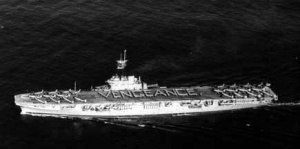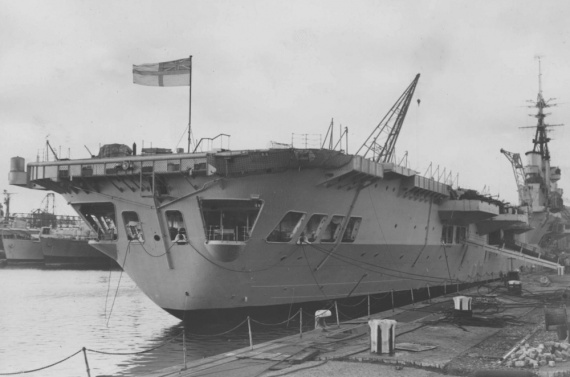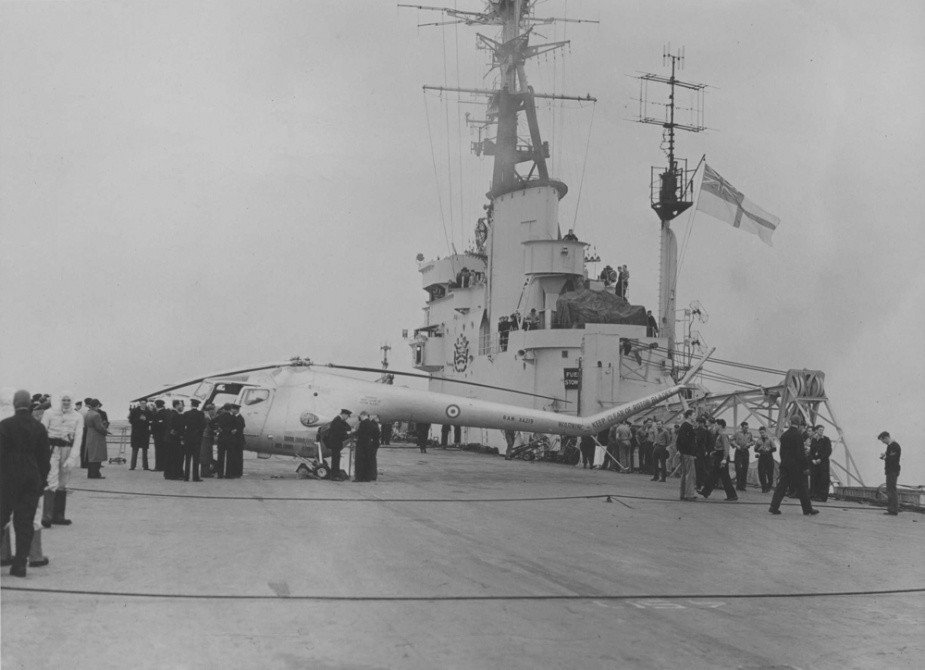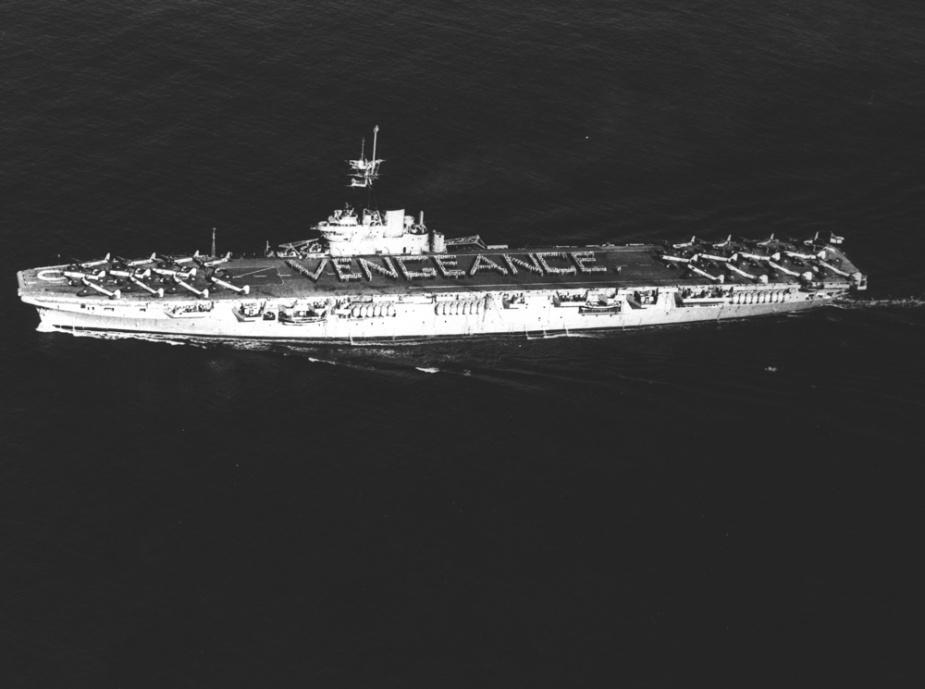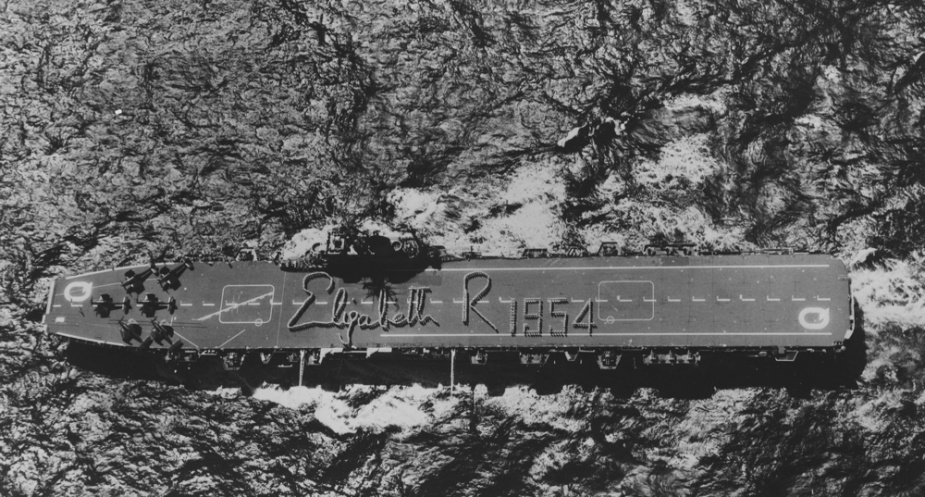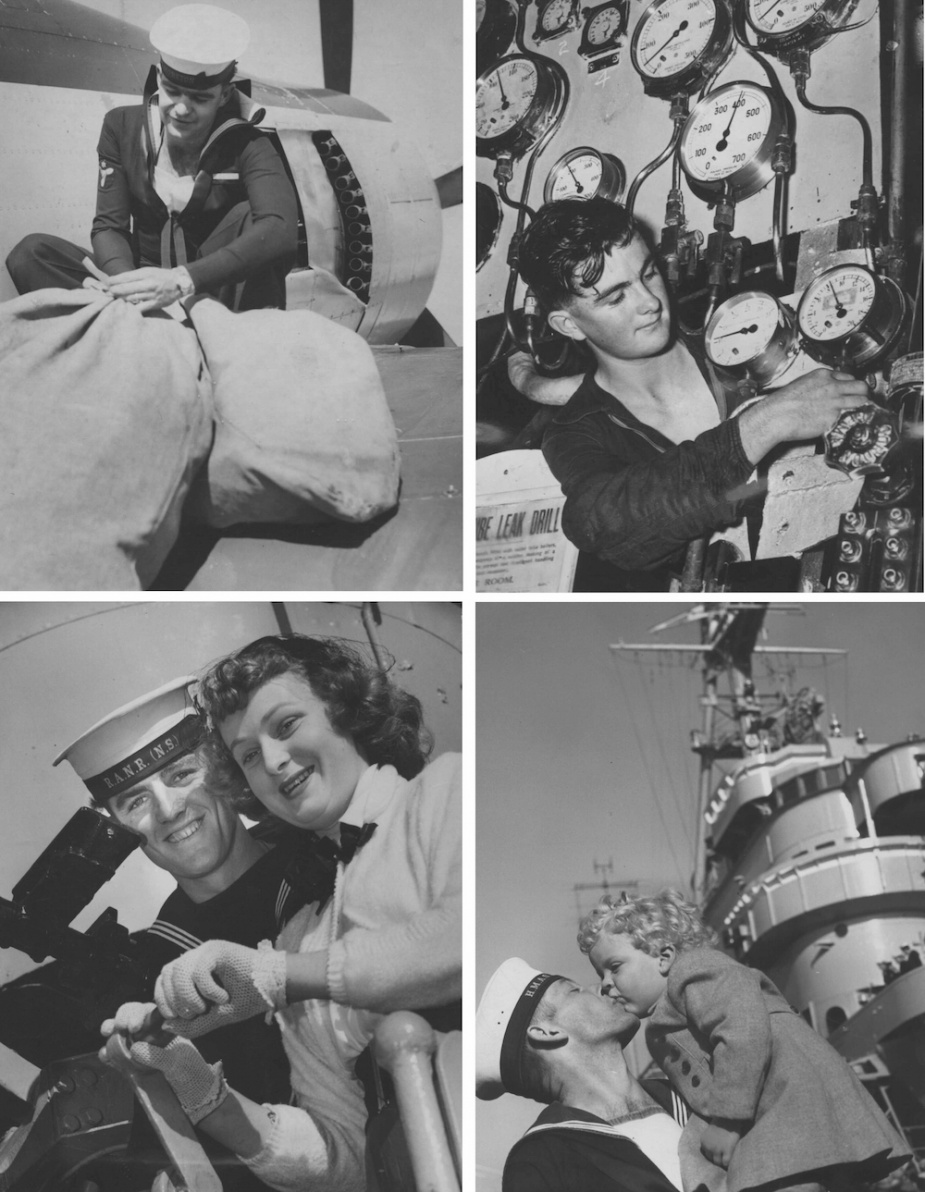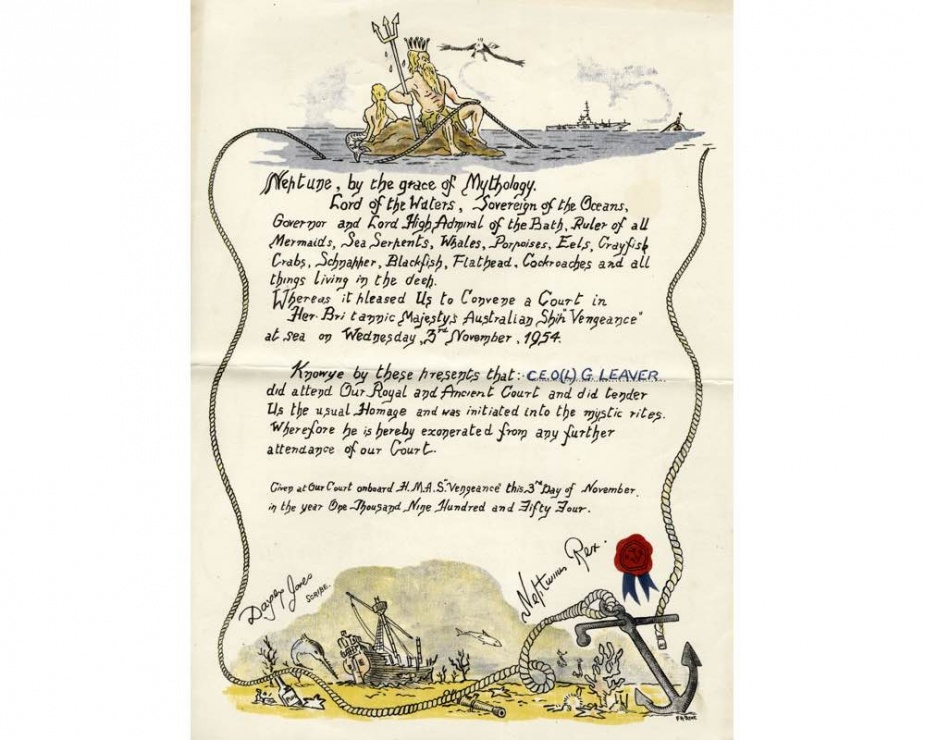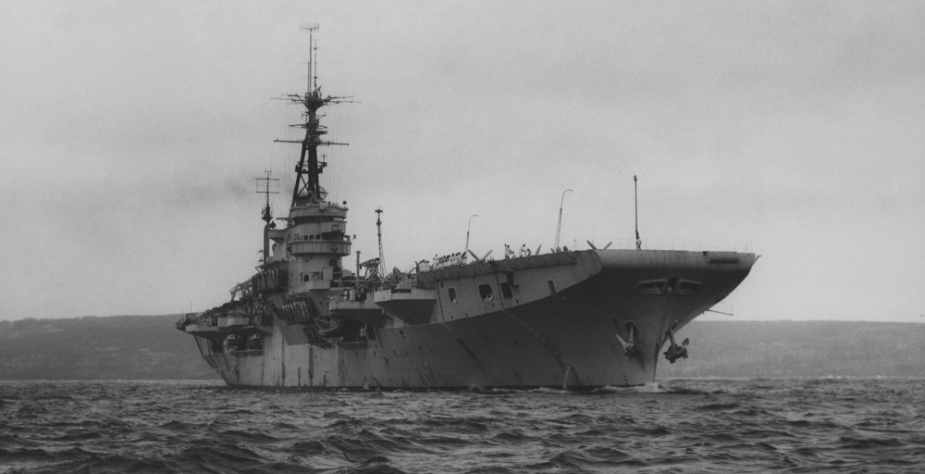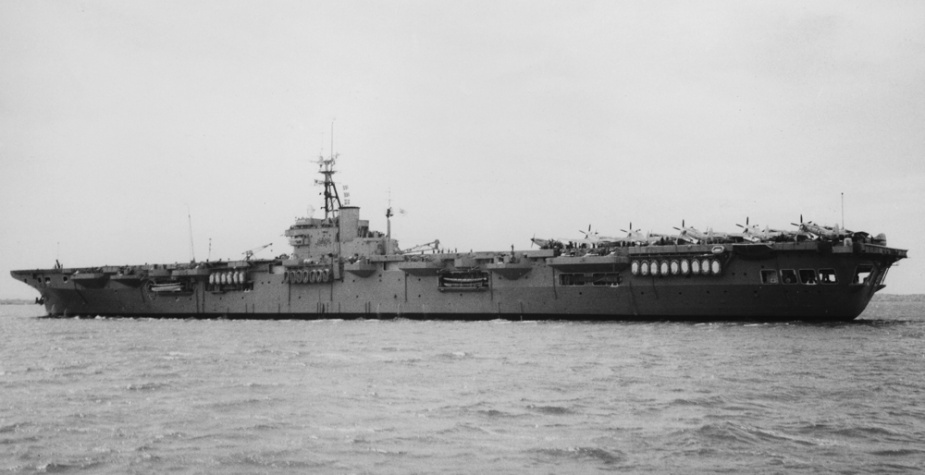HMAS Vengeance
| Class |
Colossus Class |
|---|---|
| Type |
Aircraft Carrier |
| Pennant |
R71 |
| Builder |
Swan Hunter and Wigham Richardson, Wallsend-on-Tyne, England |
| Laid Down |
16 November 1942 |
| Launched |
23 February 1944 |
| Commissioned |
13 November 1952 |
| Decommissioned |
25 October 1955 |
| Dimensions & Displacement | |
| Displacement |
|
| Length | 695 feet |
| Beam | 80 feet |
| Draught | 23 feet 6 inches |
| Performance | |
| Speed | 24 knots |
| Propulsion | |
| Machinery | Parsons turbines, twin screws |
| Horsepower | 40,000 |
| Armament | |
| Guns |
|
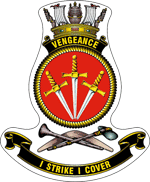
HMAS Vengeance (I) was one of a group of sixteen Light Fleet Carriers laid down in British Shipyards during 1942 and 1943. Known as the Colossus and Majestic classes, they were originally named Colossus, Glory, Ocean, Leviathan, Hercules, Majestic, Perseus, Pioneer, Terrible, Triumph, Vengeance, Venerable, Magnificent, Theseus, Warrior and Powerful.
She was commissioned by the Royal Navy as HMS Vengeance on 15 January 1945. She completed her workup in the Mediterranean in March 1945 before joining the East Indies Fleet and then the British Pacific Fleet. She sailed for Sydney in company with Venerable and Colossus, arriving in July 1945.
Vengeance (I) proceeded to Hong Kong in August 1945, remaining in the Hong Kong area until December 1945 when she returned to Australia for a refit. The refit was completed in March 1946, after which Vengeance (I) returned to Hong Kong, then Japan and later Trincomalee in Ceylon. She returned to the United Kingdom in August 1946.
Vengeance (I) continued to serve with the Home Fleet, including service in the Mediterranean and off Africa, until the early 1950s. She also spent a period conducting endurance trials in the Arctic in February and March 1949. In September 1952 she commenced a refit in preparation for her Australian service.
She was commissioned into the Royal Australian Navy as HMAS Vengeance (I), on loan from the Royal Navy, at Devonport, England, on 13 November 1952, under the temporary command of Commander Clive M Hudson, RAN with a steaming party of 550 officers and men who had arrived in England from Australia in the SS Asturias. Captain Henry M Burrell RAN assumed command on 2 December 1952.
Sailing from England in January 1953, Vengeance (I) arrived in Sydney on 11 March 1953, having proceeded via Gibraltar, Malta, Port Said, the Suez Canal, Colombo, Fremantle and Melbourne.
Following a three month refit in Sydney, Vengeance (I) commenced seagoing service with the Australian fleet in June 1953, working up in preparation for a deployment to Korea. At the end of July it was announced that HMAS Sydney (III) would deploy to Korea in lieu of Vengeance (I).
Vengeance (I) remained in Australian waters until April 1954. Between February and April 1954 she was one of several Australian warships tasked for Royal Escort duty during the visit of Her Majesty Queen Elizabeth II and His Royal Highess The Duke of Edinburgh. In company with HMA Ships Anzac (II) and Bataan (I), she escorted the SS Gothic with the Royal Party embarked, to the Cocos Islands.
On 5 April 1954, in the vicinity of the Cocos Islands, Bataan (I) was damaged in a collision with Vengeance (I) during replenishment operations. On completion of Royal Escort duty, Vengeance (I) visited Manus Island and Rabaul before returned to Sydney in May 1954.
In July 1954 Vengeance (I) commenced service as a fleet training ship, including instruction for National Service Trainees.
On 27 October 1954 she sailed from Sydney for Japan to embark aircraft, men and equipment of No.77 Squadron, Royal Australian Air Force, and return them to Australia. Vengeance (I) sailed from Yokosuka on 19 November 1954 and arrived in Sydney on 3 December.
Following a three month refit which was completed in February 1955, Vengeance (I) resumed training duties which occupied her until late April 1955. On 16 June 1955 she sailed from Sydney to commence the long passage to England and reversion to the Royal Navy, with almost 1,000 officers and sailors who were to commission HMAS Melbourne (II).
Sailing via Singapore, Colombo, Aden, Suez, Port Said and Malta, Vengeance (I) arrived in Devonport on 13 August 1955, at which time administrative control was assumed by the Senior Officer Reserve Fleet, Plymouth. Vengeance (I) decommissioned on 25 October 1955 and reverted to the Royal Navy. HMAS Melbourne (II) was commissioned three days later on 28 October 1955.
Vengeance (I) remained in the Reserve Fleet until 14 December 1956 when she was sold to Brazil. Following extensive reconstruction and modernisation in Rotterdam, Vengeance (I) was renamed and commissioned by the Brazilian Navy as Minas Gerais on 6 December 1960. The ship was further modernised in the late 1970s and early 1990s.
Completing over 40 years of service with the Brazilian Navy, Minas Gerais was decommissioned in 2001. In August 2003 it was reported that the ship was being offered for sale for $7 million.

